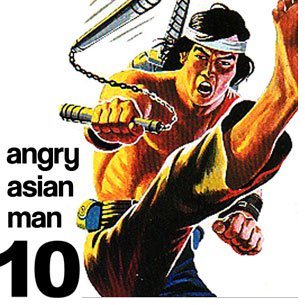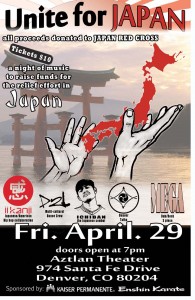 Erin and I are celebrating the second anniversary of our talk-show visualizAsian, and I’ve been writing my Nikkei View musings since 1998 (check out the Nikkei View archives). But it boggles my mind to think that Phil Yu has been writing his Angry Asian Man blog for 10 years. Why? Because he’s so frickin’ dedicated that he writes multiple times day — every day — week after week, month after month, year after… well, you get the idea.
Erin and I are celebrating the second anniversary of our talk-show visualizAsian, and I’ve been writing my Nikkei View musings since 1998 (check out the Nikkei View archives). But it boggles my mind to think that Phil Yu has been writing his Angry Asian Man blog for 10 years. Why? Because he’s so frickin’ dedicated that he writes multiple times day — every day — week after week, month after month, year after… well, you get the idea.
visualizAsian is once or twice a month. Nikkei View can be several times a week, or sometimes once a month.
But writing sometimes more than 10 post per day? Yowsa. That’s some some serious blogging — blogging on steroids.
Last year, Phil took some time off and asked guest bloggers to fill in, but I know he felt guilty stepping away for a vacation (I’m sure his wife appreciated it, though). Phil is organized — he doesn’t spend his workday posting stuff. He writes at night and sets the posts to launch later. And, these days he gets tons of submissions via email and Facebook to write about, so he’s never lacking material to cover.
Still, it’s truly an amazing feat to keep up this level of productivity for a decade.
Angry Asian Man is the one site I tell everyone that is a must-read daily blog, if they care one whit about Asian America, in politics, pop culture, news or whatever. He calls out racism. He covers hate crimes that mainstream media either overlook as not newsworthy or have forgotten. He gives props to AAPIs doing great things in Hollywood, on the world stage, in pop music. And, he helps the careers of budding young artists who deserve a wider audience.
He gets a ton of traffic and is quoted by the national media when they need an Asian American perspective. He’s inspired a generation of bloggers to follow in his wake. Some Asian Americans, notably Nelson Wong of AA Risings, have been writing longer. And some Asian Americans have gotten their blogs turned into movie deals (yeah, I’m jealous).
But it’s hard to argue that Phil Yu isn’t the most influential Asian American voice out there. He represents us all, and is a national treasure for his efforts.
Thanks, Phil. Keep rocking.













